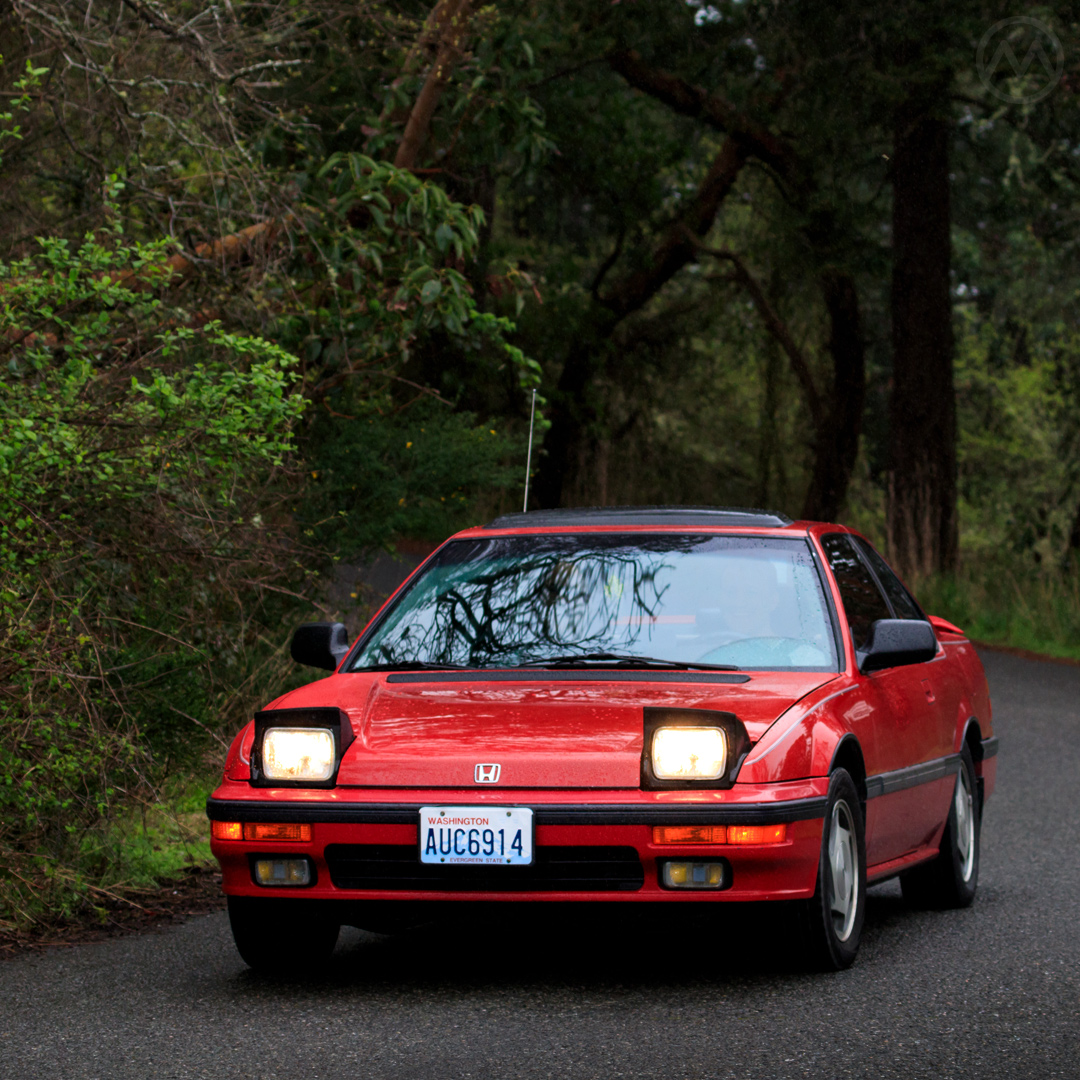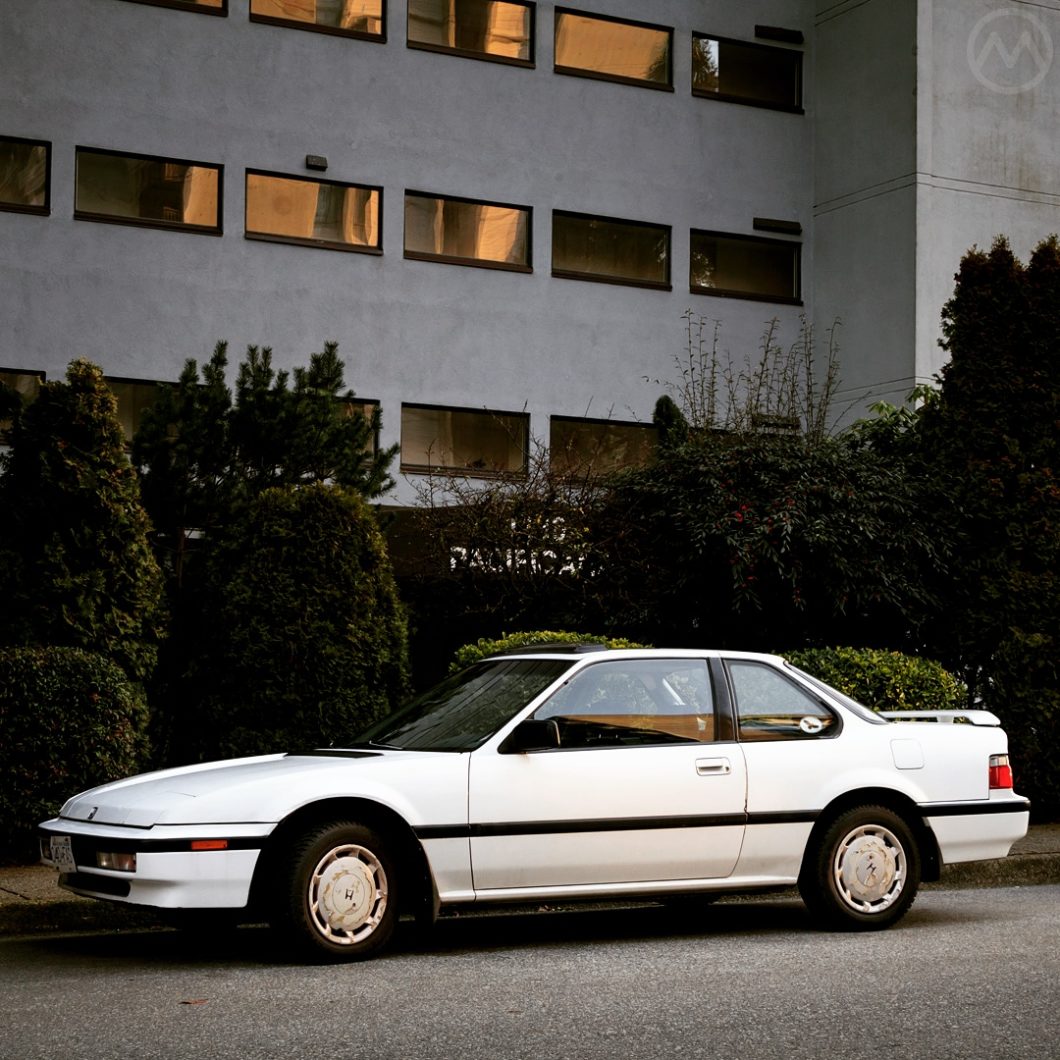When the second-generation Honda Prelude came along, it defined the car. Sure, the first generation had been modestly successful, but the sedate Mk1 Prelude always drew complaints that it wasn’t fast enough or sharp enough.
Those issues were vanquished by the Mk2, which became the best-selling and definitive Prelude. It was faster if still not “fast” in a straight line, but it was a corner-carver extraordinaire, and its sharp-suited, low-slung looks were a standout.
Small cheap coupes and sporty cars were still huge sellers in the time of the Mk2 Prelude, and when it came time to replace it Honda chose not to mess with success. Evolution was the order of the day. But even with a conservative vision for the product and lots of DNA retained between generations, it was still a product of 1980s Japan, where the sky was the limit on engineering ideas.
Prelude Evolution
The Mk3, introduced in April of 1987, looked every inch an updated version of the Mk2, and its styling was done under the very same lead designer – Masato Nakano. By the time the Mk3 Prelude was released Nakano was working hard on finalizing the NSX.
If it bears some resemblance to other Hondas of the day, it’s because the popularity of the Prelude informed other Hondas and because Nakano didn’t work alone. Fellow staffer Tomoyuki Arai also worked on the Mk3 and the Mk3 Accord coupe and hatch. Later on, he would be heavily involved with the next Prelude for 1992.
Much of the formula under the skin was retained from the Mk2 as well, still front drive, still set up for tack-sharp handling, and still using the same engine families.
There’s always sports car people who whinge “Oh noes! Its fwont weeel dwive…” Tell that to Paddy Hopkirk or Erik Carlsson. There are plenty of front-wheel drive cars that are amazing handlers and lots of fun to drive. The third, fourth, and fifth generations of Prelude were some of the very best of any era.
The base Mk3 Preludes in the USA stayed with a low end B20A but the Mk2 Si’s A20, borrowed from the accord, was replaced by a 135-hp B20A 16V, now with 135 hp – a nearly 20 percent bump for the Si. A carb’d B20A3 was the base engine in the Mk3. After the Mk3’s mid-cycle refresh, the B20 was joined by a 2.1L 140-hp B21A for 1990-91.
Four Wheel Steering
It still wasn’t fast in a straight line – but you could get it with the Prelude’s single greatest innovation up to that time – Four Wheel Steering (4WS).
Honda beat Nissan, Mazda, and Mitsubishi to market with 4WS, though they and a bunch of other manufacturers were nipping at Honda’s heels.
Unlike those other rather complex systems, however, Honda’s setup was purely mechanical. It involved two steering boxes and a rod that went between them, an ingenious setup from a maintenance standpoint and much cheaper to make work than solenoids and sensors.
When the wheel was turned only slightly, the rear wheels would steer in the same direction as the fronts, resulting in quick, very stable lane changes. Indeed, Honda’s engineers sold the idea to management on the safety advantages that this could produce. Turning the wheel a little more would point the rears straight ahead. Full lock caused the rear wheels to turn in the opposite direction to make parallel parking easier.
In Japan, buyers flocked to it – 80 percent of JDM Preludes came equipped with the 4WS system. In the USA, however, it was a $1,300 option on a $16,000 car designed to appeal to younger (and therefore less affluent) buyers, and it was hard to demonstrate the advantages except by quoting the slalom numbers from a magazine.

If you bought it, it raised the Prelude’s handling capabilities to exotic car levels – even Corvettes and Ferraris could not keep up in a slalom. But how often do you drive on a slalom?
The regular Prelude already handled beautifully and made the most of its power thanks to Honda’s emphasis on light weight, so most buyers didn’t see the need. In Japan, where tight parking spaces are the norm, the ability to maneuver in close quarters at full lock was a much easier sell. Many more American buyers opted for the optional anti-lock brakes, the advantages of which seemed easier to see.
This generation of Prelude didn’t sell as well as the Mk2, but that didn’t have so much to do with the car as with the market. Buyers were gradually shifting away from small Coupes and into SUVs, though the real momentum of that shift was not clear until after 1990. The Mk2 still did pretty well for Honda, and it was built like a tank for what was a lightweight sporty car – there are many survivors today.
A large number of Prelude specials were available in Japan, including ones that matched the North American spec, and a luxury version, the Prelude INX. As usual Japan got the most powerful versions. The Mk3 gave way to the much curvier Mk4 in late 1991, but the 4WS system remained even if there were few takers in the USA.

